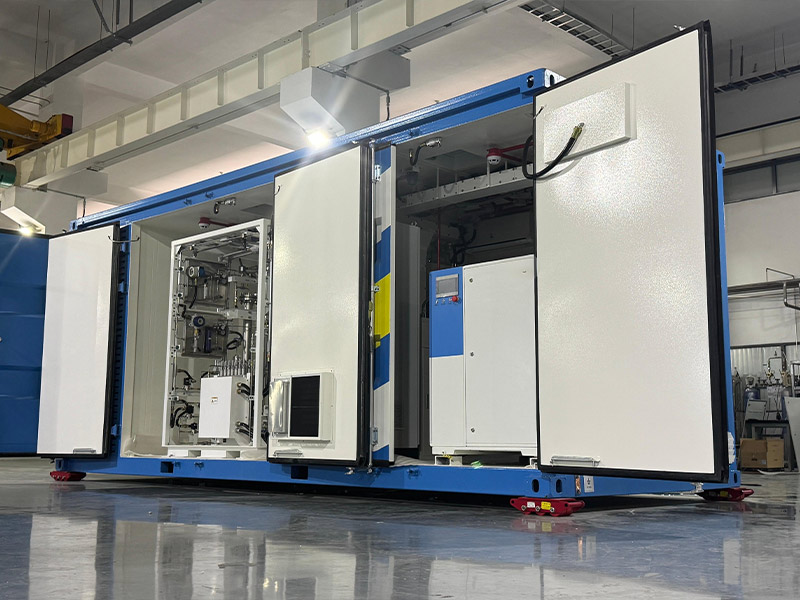Hydrogen is often misunderstood—many people associate it with explosions like the Hindenburg disaster. But is hydrogen energy actually dangerous? Let’s separate myths from facts and explore the real safety risks of hydrogen fuel.
Keypoints
l Hydrogen is flammable but not inherently dangerous—its rapid dispersion and upward burn make it safer than gasoline in many scenarios.
l Modern hydrogen systems prioritize safety with crash-resistant tanks, leak detectors, and automatic shutoffs for vehicles and homes.
l Hydrogen’s risks are manageable with proper engineering, ventilation, and adherence to safety standards.
l Historical fears (like the Hindenburg) are outdated—today’s hydrogen technology is rigorously tested and reliable.
l Hydrogen is already safely used worldwide in rockets, cars, and industrial applications, proving its viability as a clean energy source.
Many people associate hydrogen with explosions due to:

A German airship filled with hydrogen caught fire while landing. This tragic event created lasting fears about hydrogen’s volatility.
Though technically accurate, these involve nuclear fusion—not the kind of hydrogen used in energy systems.
Like gasoline or natural gas, hydrogen is flammable when mixed with air and exposed to a spark.
But here’s the key: flammable doesn’t mean unsafe—if handled correctly.
Fact: Hydrogen is flammable, but no more dangerous than gasoline or natural gas—just different.
Key Safety Properties of Hydrogen:
|
Property |
Hydrogen (H₂) |
Gasoline |
Natural Gas (Methane) |
|
Flammability Range |
4–75% in air |
1.4–7.6% |
5–15% |
|
Ignition Energy |
Very low (easier to ignite) |
Higher |
Moderate |
|
Density |
Lightest gas (rises quickly) |
Heavy (pools on ground) |
Light (rises) |
|
Explosion Risk |
Rapid dispersion reduces risk |
High (vapors accumulate) |
Moderate |
l Dissipates rapidly (doesn’t pool like gasoline).
l Burns upward (unlike propane, which spreads horizontally).
l Non-toxic (unlike gasoline fumes or battery chemicals).
l Wider flammability range (needs careful handling).
l Harder to detect (colorless, odorless—requires sensors).
|
Scenario |
Hydrogen Car |
Gasoline Car |
|
Leak in a crash |
Hydrogen rises and disperses quickly |
Gasoline pools, creating fire risk |
|
Ignition risk |
Needs an immediate spark |
Can ignite from hot surfaces |
|
Explosion risk |
Very low (unless confined) |
Higher (vapors can explode) |
|
Conclusion: Hydrogen cars are at least as safe as gasoline cars, just different. |
||
Hydrogen energy offers a clean and powerful alternative to fossil fuels, but like any energy source, it must be handled safely. Modern hydrogen systems are designed with multiple layers of protection to ensure safe use in different environments—from cars to homes to transport networks. Here’s how safety is addressed in each area:
Hydrogen-powered vehicles are built with safety as a top priority. The hydrogen is stored in high-pressure tanks made from durable materials like carbon fiber, capable of withstanding severe impacts and temperature changes. These vehicles are equipped with automatic shut-off systems that quickly stop the hydrogen supply in the event of a crash or leak.
Advanced sensors monitor the system at all times, and if hydrogen is detected, the gas disperses upward quickly into the air, reducing the risk of ignition. Hydrogen cars are also subjected to rigorous crash tests, similar to gasoline and electric vehicles, to ensure passenger safety on the road.
In residential and industrial applications, hydrogen systems follow strict installation and operational safety guidelines. Proper ventilation is essential to avoid gas accumulation, so systems are installed with vents and airflow controls. Hydrogen detectors are used to monitor the environment, providing real-time alerts and automatically shutting off the system if a leak is detected. Equipment such as fuel cells and storage tanks are placed in secure, temperature-controlled locations, away from heat sources.
In larger facilities, fire suppression systems are often included as an added layer of protection. All installation and maintenance work should be handled by trained professionals to ensure full compliance with safety standards.
Hydrogen storage and transport require specialized equipment and procedures. Hydrogen is typically stored in high-pressure tanks that are thoroughly tested for safety, including resistance to pressure, impact, and extreme temperatures.
When transported in liquid form, it must be kept at extremely low temperatures, using advanced insulation and containment technology. Trucks and trailers that carry hydrogen must meet strict transportation regulations and are often monitored with GPS systems. Drivers and operators receive specific safety training to ensure that every step of the delivery process is handled responsibly.
✅ Yes—with proper engineering and regulations.
NASA has used hydrogen safely for rockets since the 1960s.
Japan has over 160 hydrogen fueling stations with no major incidents.
Europe is building hydrogen pipelines with strict safety codes.
Biggest risks come from:
l Poorly maintained equipment
l Ignoring safety protocols
No—hydrogen is flammable but safer in some ways: it disperses quickly and doesn’t pool like gasoline, reducing explosion risks.
Unlikely. Hydrogen tanks are crash-tested and leak-proof, and the gas rises away from ignition sources.
Leak detectors, ventilation systems, and automatic shutoffs prevent buildup, similar to natural gas safety measures.
The airship’s flammable coating—not just hydrogen—caused the fire. Modern hydrogen systems are far safer.
No. High-pressure tanks are rigorously tested, and liquid hydrogen is stored in insulated, secure containers.
It rises and disperses rapidly, unlike heavier fuels that linger and pose higher explosion risks.
Yes. Over 160 stations operate in Japan with no major incidents, using strict safety protocols.


